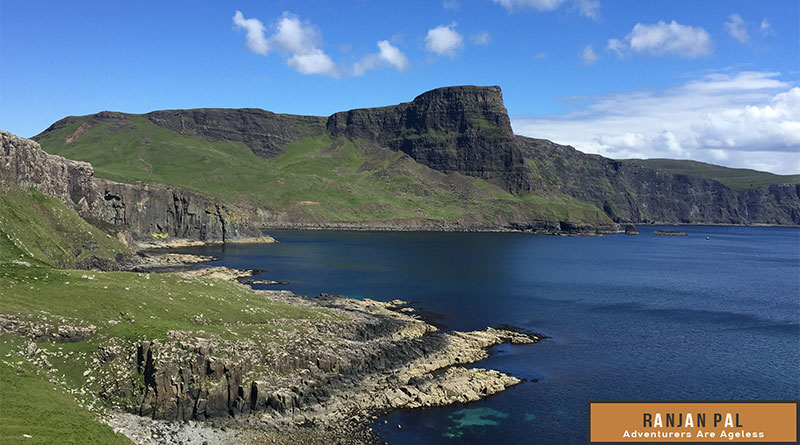
Travels with my Mother – Scotland Forever !
Guest Blog by Mallika Pal

Short of a ferry, we experimented with every mode of transport possible that Scotland had to offer, alternating between the National Rail and Citylink coaches. The service was particularly charming – as we alighted in Glasgow, our cheeky Santa Claus of a bus driver, upon seeing me emerge from my sleeping mask commented, “Been sleeping? Me too.” He also instructed us to wear our seatbelts as a “wee favour” to the law and warned us not to “bugger off” at our pit stop for more than five minutes for a “fag or whizz”.
However, nothing came close to the wild solitude of cruising the Isle of Skye in a rented vehicle, soaking in the shoreline and skyline at one’s own pace. It was a surreal experience that at every viewpoint, it made you wonder if the Highlands were at your behest or you at theirs. The dimensions of its glens and lochs – lush greenery spotted with country sheep, yet haunted by the 18th century massacre of thousands of Scottish Jacobites, in an ill-fated coup under the flag of of Bonnie Prince Charles, or The Young Pretender, depending which side of the Anglo-Scottish border you stood – almost gave one the feeling of l’appel du vide that overcame so many to martyr themselves for Scotland. Here stood a land as captivating as the Earth could be, yet in a fatal state of persecution. The most glorious thing that a clansman could do was lead the final Highland charge into the Redcoat cannon fire, and into the archives of history itself.
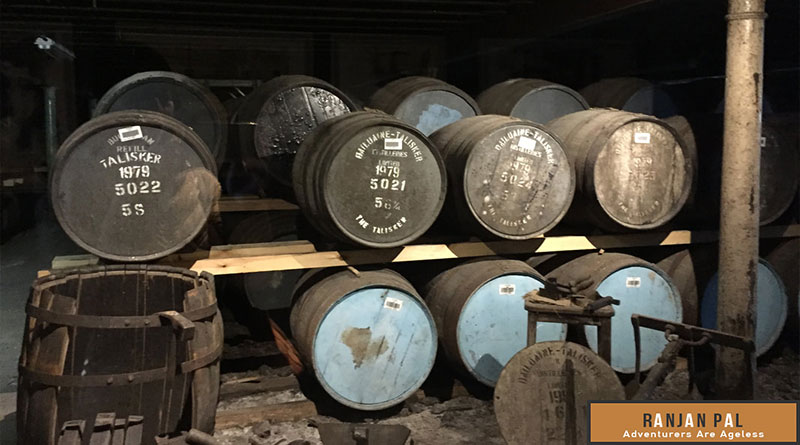 OAK CASKETS AT TALISKER DISTILLERY OAK CASKETS AT TALISKER DISTILLERY |
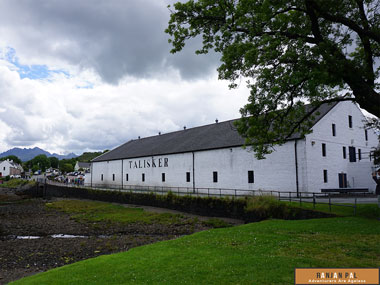 TALISKER DISTILLERY ON LOCH HARPORT TALISKER DISTILLERY ON LOCH HARPORT |
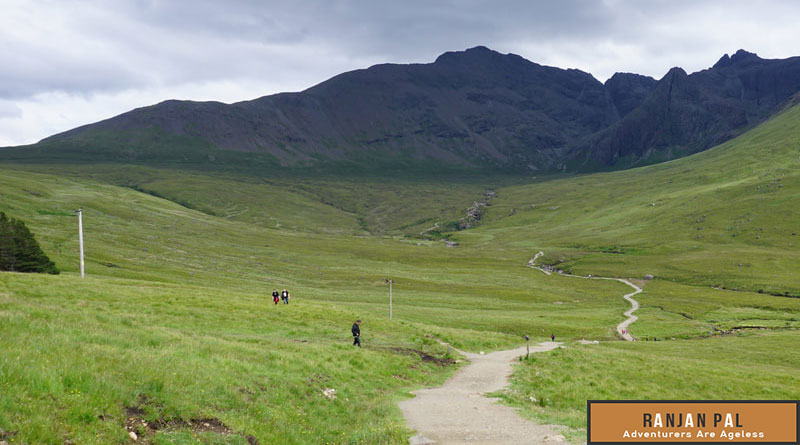 THE FOOTPATH UP TO SKYE’S FAIRY POOLS, NESTLED IN THE BLACK CUILLIN RANGE
THE FOOTPATH UP TO SKYE’S FAIRY POOLS, NESTLED IN THE BLACK CUILLIN RANGEThe rhythm of Scotland’s landscapes don’t merely begin in its wilderness, its capital boasts a topography that would pique the curiosity of volcanologists, pagans, and medieval historians alike. Arthur’s Seat, an extinct volcano lording over the city’s neighbourhoods with a centrifugal force, has been blessed by fairies in folklore, revered by maidens in the Middle Ages, and played backdrop to legends of King Arthur in both. A climb to the summit can take the form of a two-hour stroll past Holyrood Palace and the ruins of St. Anthony’s Chapel, or a thirty-minute chase up the ominous ‘Red Route’, which we opted for. The path followed earthen steps that would crescendo in a staccato, offering phenomenal bird’s eye views of Edinburgh, and taking your breath away in ways more than one.
Like the Istanbuls and Berlins of the world, Edinburgh flaunts the sensuous duality of two cities conjoined by history, a Reformation-era gothic Old Town – distinguished by the striking Scots monument, the largest altar to a literary figure in the world, and the Balmoral Hotel’s iconic clock tower – which blends into the neoclassical Georgian New Town outlined by docks on the waterfront. The urban symbiosis is no better appreciated than from Calton Hill, which offers its own dimension of architectural history, as upon it is perched the National Monument, a Parthenon-inspired, half-built soldiers’ memorial, and the Corinthian columns of the Dugald Stewart Monument.
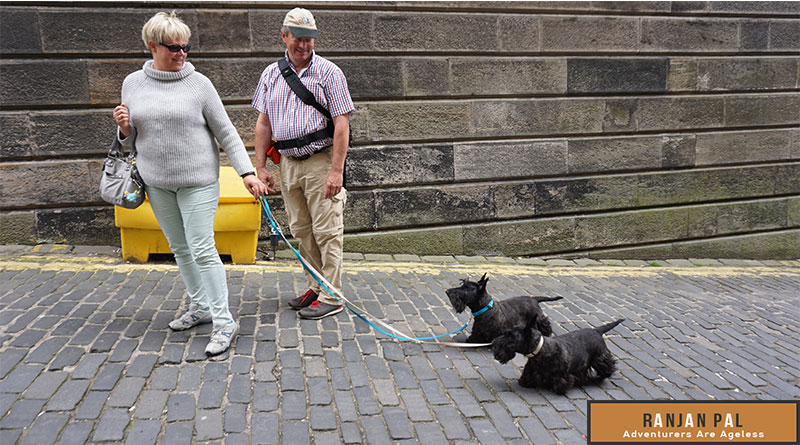 SCOTTISH YORKSHIRE TERRIERS PROUDLY WAGGING THEIR TAILS ON THE STREETS OF EDINBURGH
SCOTTISH YORKSHIRE TERRIERS PROUDLY WAGGING THEIR TAILS ON THE STREETS OF EDINBURGH GLASGOW, A MELTING POT OF TRADITION AND MODERNITY
GLASGOW, A MELTING POT OF TRADITION AND MODERNITY ![]()

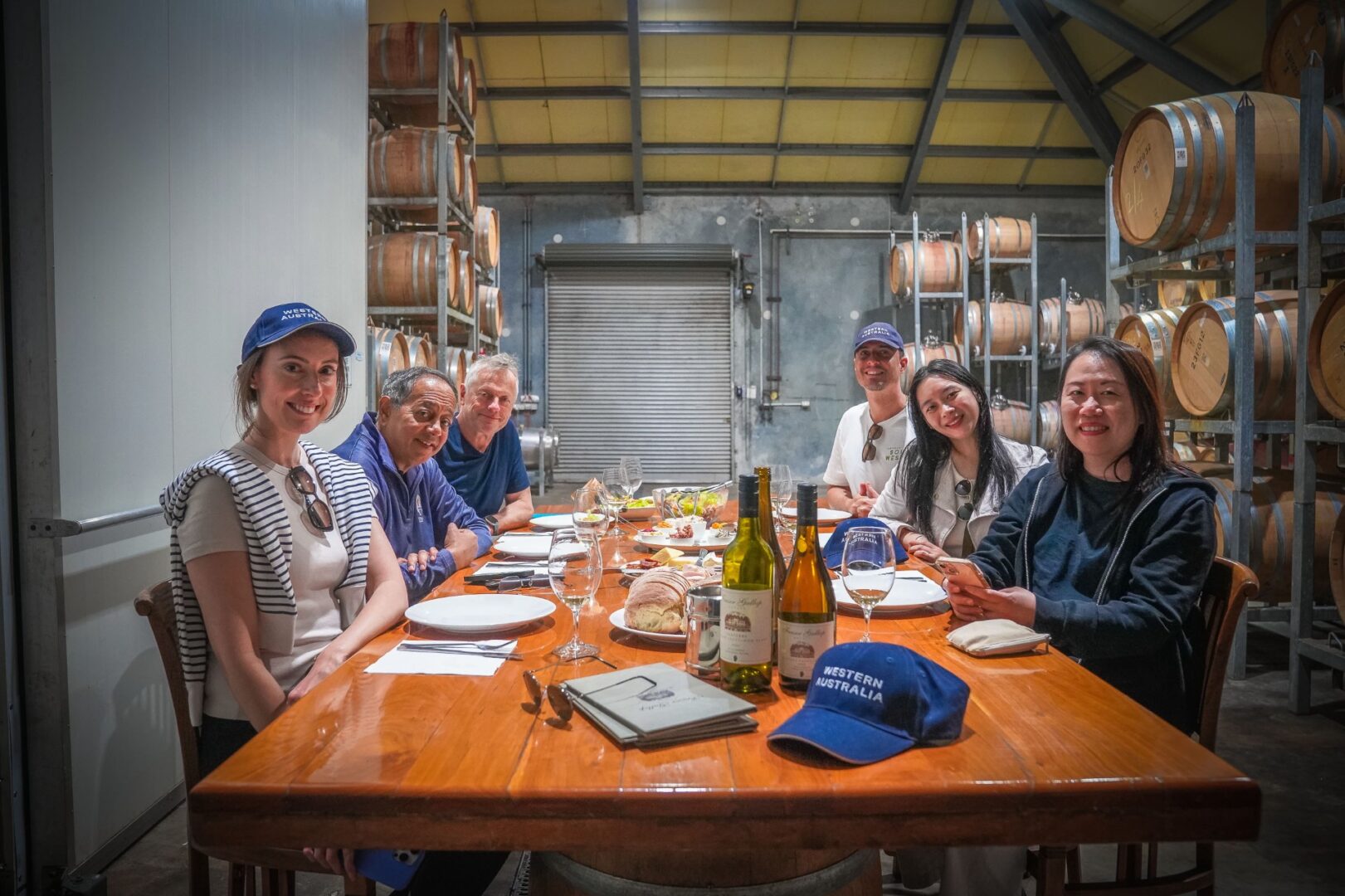
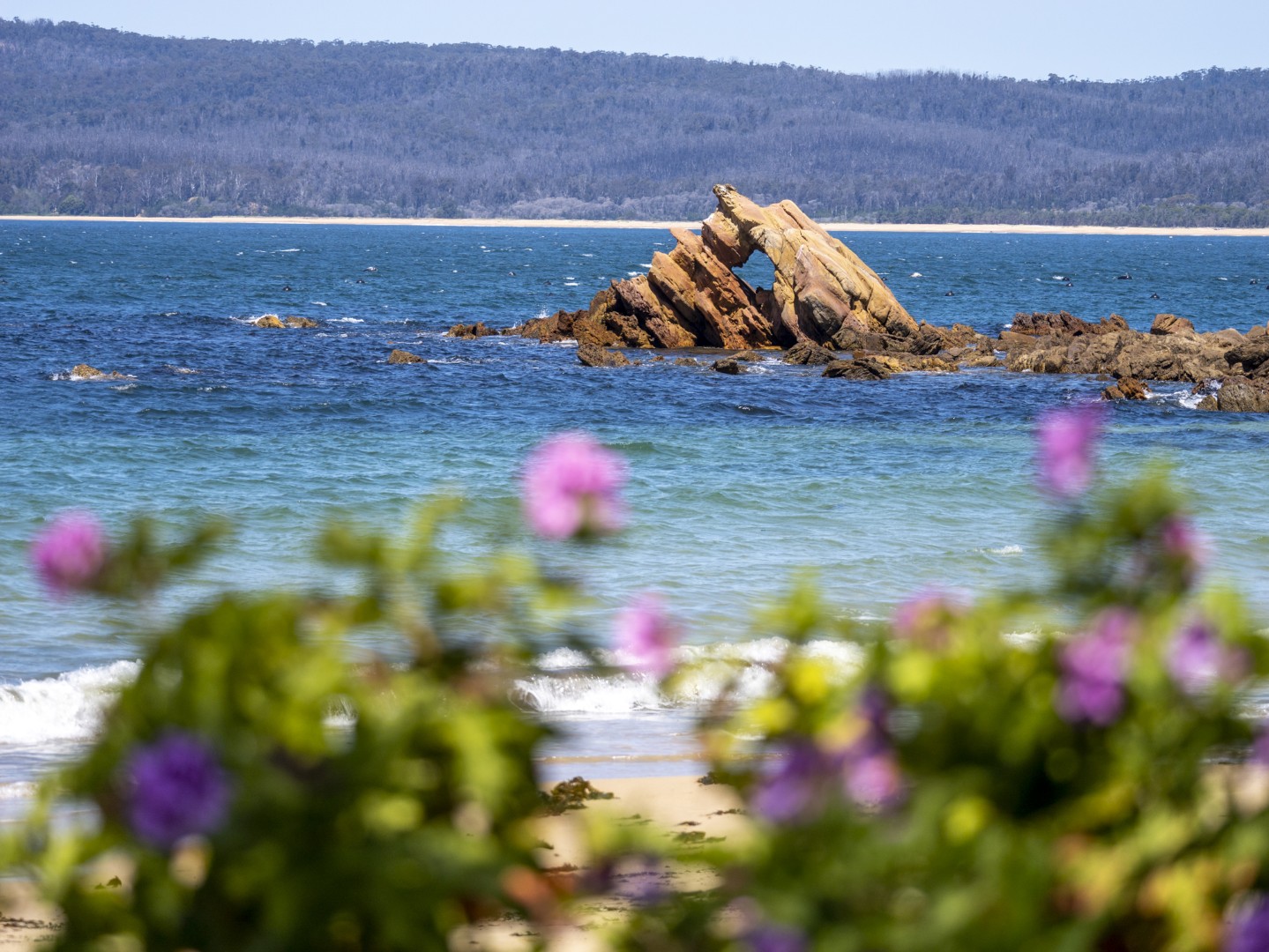
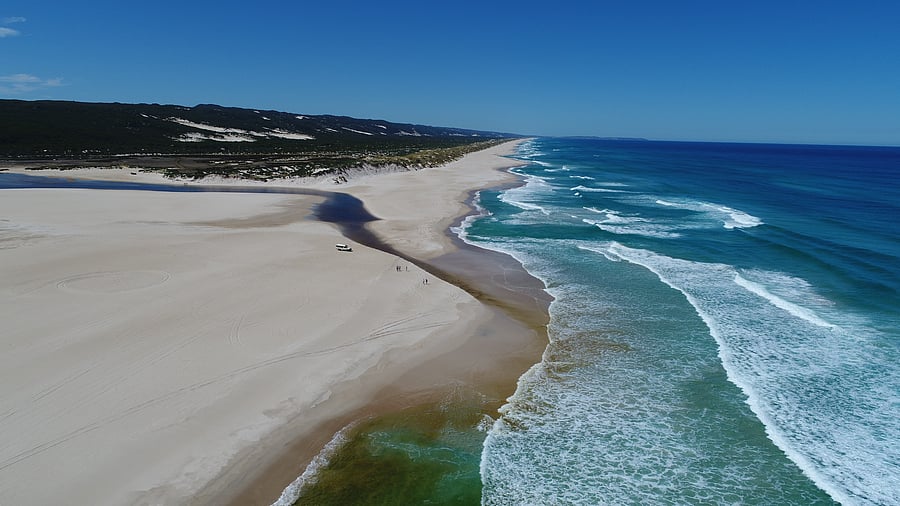
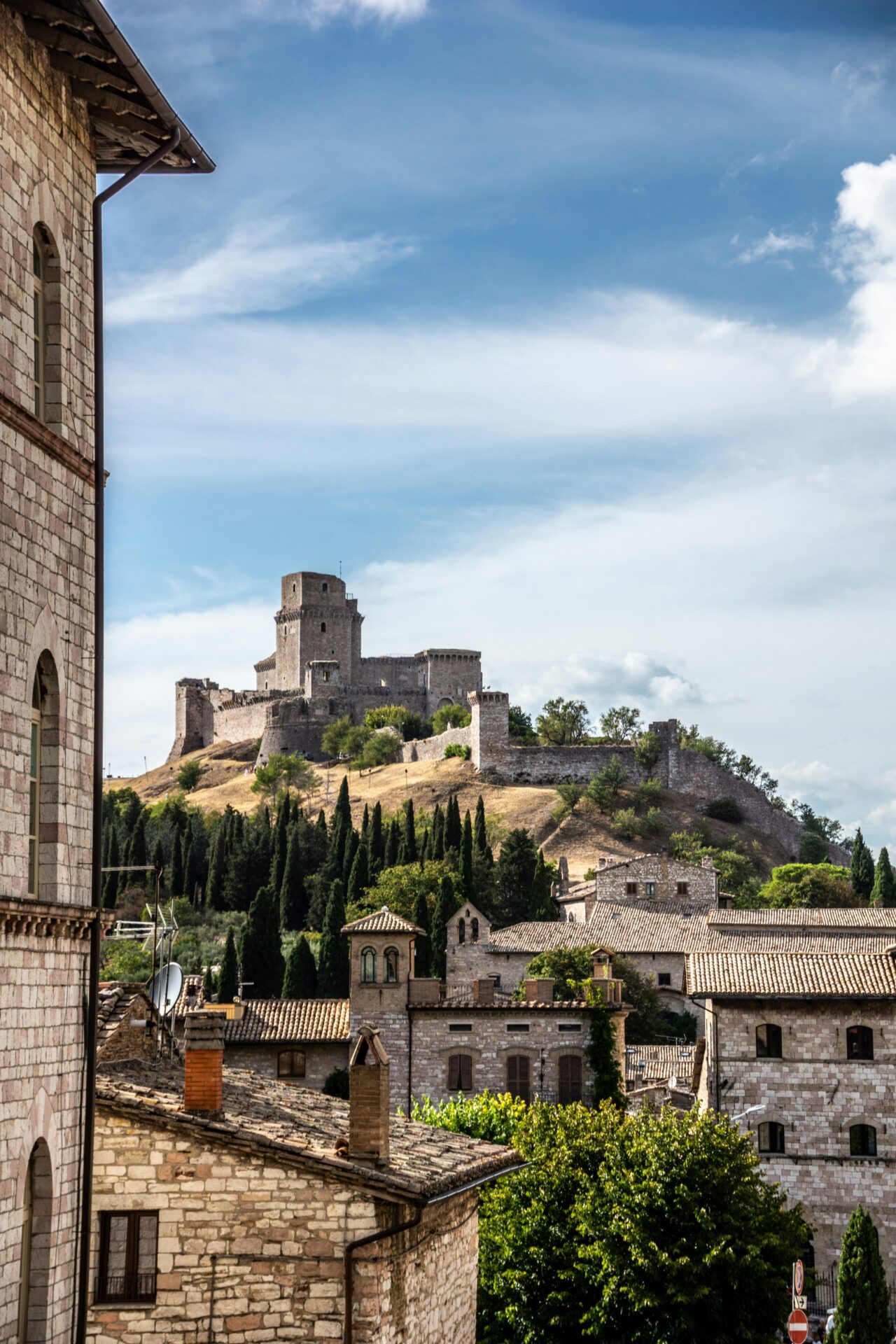

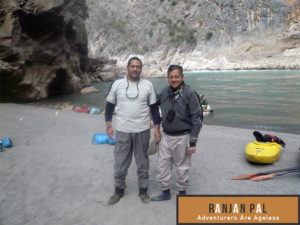


I have been browsing online greater than 3 hours as of late, yet I never found any interesting article like yours. It is lovely worth enough for me. Personally, if all web owners and bloggers made excellent content as you probably did, the web will probably be much more helpful than ever before.
Thank you for those kind words. You made our day. 😀
Fantastic site. A lot of useful info here. I’m sending it to some friends ans additionally sharing in delicious.
And obviously, thanks on your sweat!
Thank you sharing it with your friends. I really appreciate it. 🙂